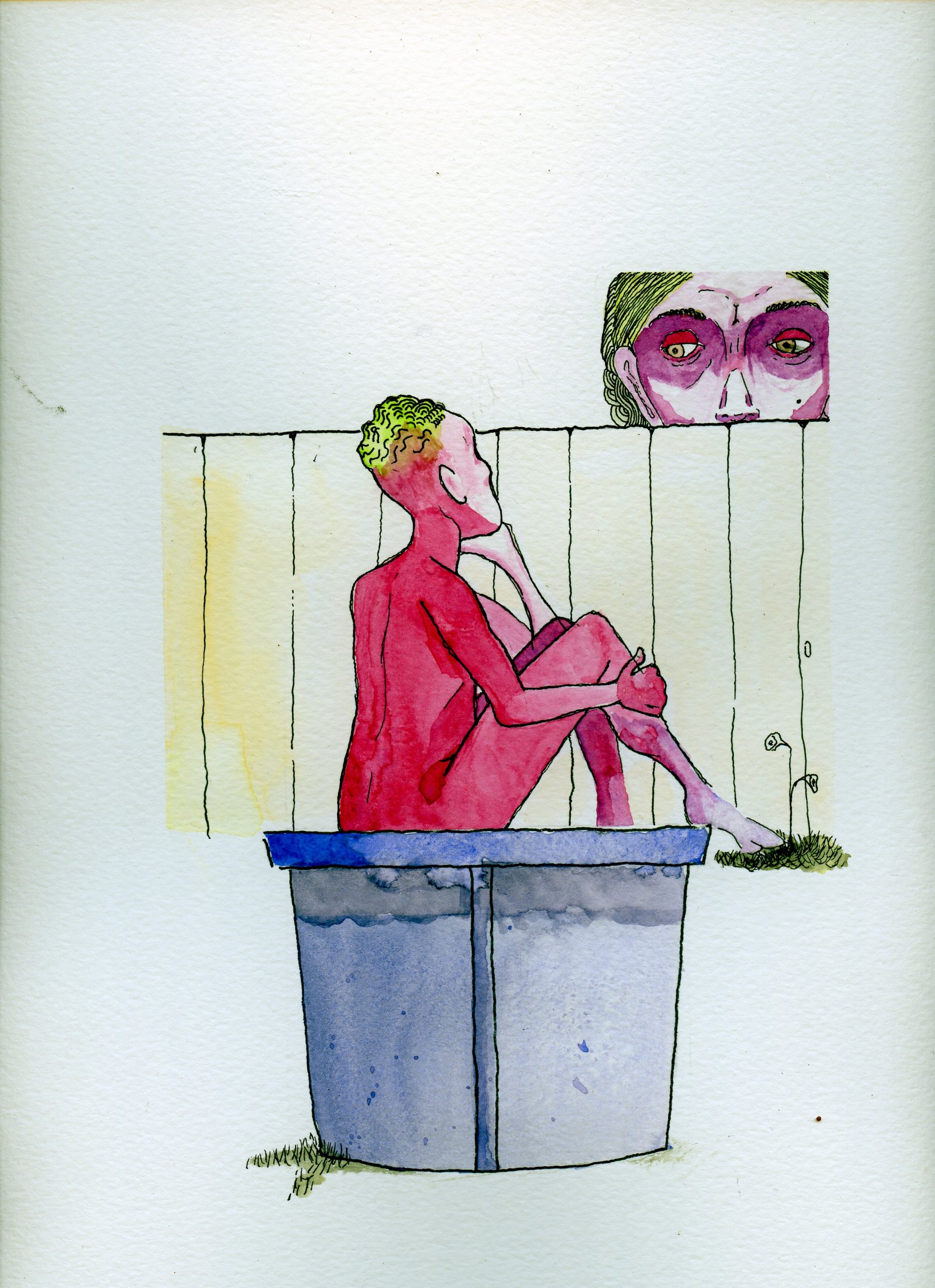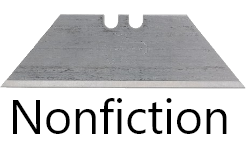Dragon Fruit

art by Robert Gemaehlich.
We stand in the Home Depot garden center, my younger son and I, eyeing a gangly dragon fruit plant, beside a row of potted palms.
“We need to buy this,” he says. “If we’re going to live in California, we need to own a fruit-bearing plant.” The “we” part confuses me. We (his parents, recent transplants from New Jersey) have only lived in Southern California a few months. The calendar says December, but it’s hot and dry — more like a desert that nomads pass through than a place where they put down roots. He, in college in Ohio and a few months from graduating, is an occasional visitor at best and, if all goes well, will be living and working on his own in a few months. But this kid knows how to play his mom. I look at the plant. I look at the kid. And I cave. My patio’s microscopic, but if my son wants a (someday, maybe) fruit-bearing cactus on that patio to make our house feel like his home, I’ll do it. I buy the plant. I buy a marine-blue pot, eighteen inches in diameter. I buy special succulent soil. I buy special succulent food.
Taxonomy, the science of naming organisms, can be tricky. For years, scientists thought the dragon fruit plant was a member of the genus Hylocereus. They recently discovered they were wrong. While you’ll still see the dragon fruit plant referred to as Hylocereus, that term is now what taxonomists call a synonym — but not your English teacher’s synonym. In plant taxonomy, one cannot simply exchange a synonym for the name with which it’s synonymous; the synonym may be used only in conjunction with the scientifically correct name. In plant taxonomy, a synonym’s no substitute for the real thing.
The real thing, Selenicereus, sits on my patio. Its colloquial name derives from the exterior of its fruit — fantastical purplish-pink or yellow scales with green-tipped points, slightly waxy to the touch. Compact, reptilian, a visual form of onomatopoeia just small enough to fit in your hand. The fruit may stem from its plant, but the plant is nothing like its fruit. More hydra than dragon, Selenicereus is a spreading cactus — an insidious wanderer that grows in unruly segments. The end of one segment may generate three more, while another sprouts a new segment from its middle. In the dragon fruit plant’s brief tenure on my patio, I’ve filled its marine-blue pot with stakes, hoping to guide its path, but it goes where it chooses.
As our younger son started college in 2018, my husband and I found ourselves with an emptying nest in New Jersey and the chance to move to Singapore. Like the dragon fruit plant, we went where we chose. You might think this was a difficult decision, but the possibility of adventure overtook us well before the second thoughts. Our older son had long since referred to college as “home,” but our younger son — who, since he’d been old enough to talk, had begun every family vacation by asking “When are we going home?” — hadn’t yet made that break. Still, he told us, “Go.”
We couldn’t have known it at the time, but the act of untethering ourselves from our family home, coupled with a global pandemic a year and a half later, unleashed a cascade of moves. Leafing through the program at my younger son’s college graduation last spring, I noticed that each student’s name was followed by their hometown. In that moment, I grasped how many ways over the last four years he could’ve answered the simple question, “Where’s your home?” The possible responses: our town in New Jersey (pre-Singapore), Singapore (pre-Covid), his grandparents’ town in New Jersey (mid-Singapore, early Covid), our town in New Jersey again (post-Singapore, mid-Covid) and our current town in California (post-New Jersey, still Covid). The program listed our New Jersey town. It’s entirely possible that he never changed his address with the registrar once in four years, but as Hylocereus is to Selenicereus, it felt equally possible that all of the options but one were just a synonym for what he believed was the real thing.
We all have a taxonomy of home. It may shift over time, but it’s there. I still keep a keychain with the key to my childhood home on it. But there are other keys too, each of them to a lock on a door of a place I once called home. They’re all synonyms. These days, with New Jersey and Singapore behind us, my taxonomy of home is in a state of flux. I’m not quite sure if Southern California is my Selenicereus or my Hylocereus.
A few months later, I’m standing on my California patio with my younger son (now employed and living on his own in LA), admiring the dragon fruit plant’s progress. Lifting a segment in his hands, he urges me to take some cuttings from the mother plant and launch them in pots of their own. It’ll be good for the mother and for the cuttings, he insists. He isn’t wrong. A dragon fruit plant grown from seed can take five years or more to bear fruit, but a cutting will bear fruit in just a year or two. A little displacement can be a good thing.
The fruit may stem from its plant, but the plant is nothing like its fruit. I look more closely, and study the end segments, their aerial roots eager to establish a foothold of their own as they move away from their roots in the soil. One segment seems particularly determined as it strains toward a patio chair.
When my younger son decided to take a job in LA, I didn’t discourage him, even as I gently told him not to take the job simply because we lived nearby. My dragon fruit plant is in a pot, not in the ground. As we stand on the patio, he keeps talking about the benefits of cuttings, and I wonder if his taxonomy of home is shifting — if he’s examining the possibilities through a new lens, one where home is where he wants it to be, rather than where we are. To my surprise, my thoughts drift to the mother plant. If I take a cutting, how will she feel? More buoyant? Less burdened? Like part of her is missing? The answer might be a bit of both. But then I remember: When you’re 22 and can go where you choose, it isn’t really about the mother plant, is it?
In my mind, a word takes shape.
“Go.”


